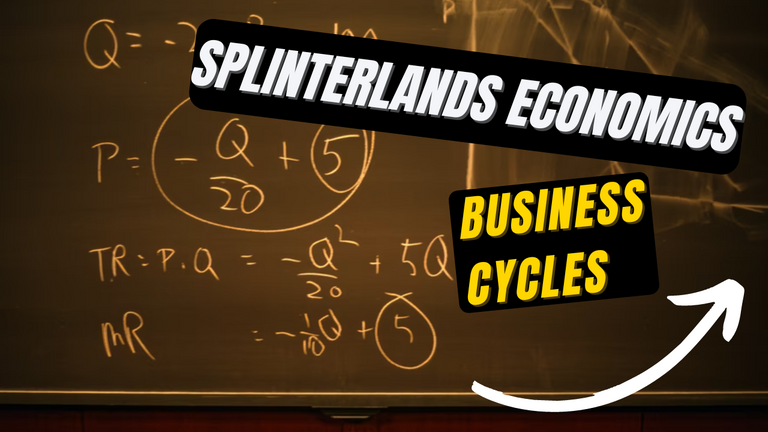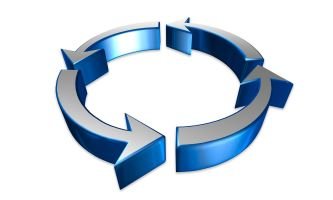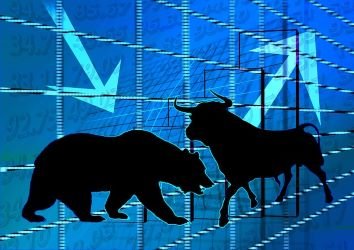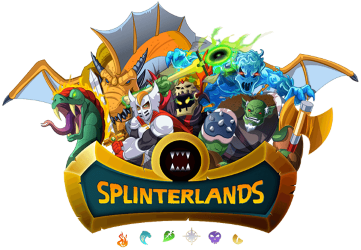Splinterlands Economics: Business Cycles
Hello everyone! We are back again today with another edition of Splinterland Economics - a series in which we introduce a basic economic concept and then apply it to Splinterlands. If this is your first time reading, just to tell you a little bit about myself: my day job is in an unrelated area but I consider myself a little bit of economics nerd - I read a little (or maybe way, way) more news than I should, double majored in econ, and am obsessed with optimization. I love the way Splinterlands is equal parts card game and resource allocation game. My goal with these articles is to share a little bit of what I know with you all.
If you hear conversations about the economy, you may often hear the term "recession" or "GDP". Our subject for today is closely related to these terms, and understanding it will help you to be able to read the headlines and have a slightly better understanding of what all the fuss is about. Our topic this week is a descriptor for the state and behavior of the economy - today, we'll be talking about business cycles!

What are business cycles?
Business cycles describe the way in which the economy tends to go through periods of expansion and contraction. Each cycle can be divided into smaller subsections, and if you hear the words "recovery" or "economic expansion" then they are likely referring to a period of increasing production and economic activity. On the flip side, "recession" or "economic contraction" are referring to a period or decreasing production and economic activity. There are a variety of different ways to measure economic activity, and if you see the terms "GDP" or "GNP", those are two terms used to describe the economic activity, or output of a country.
I would like to take a moment here for a note on the terms "bull market" and "bear market". Those terms refer to times when asset prices are increasing or decreasing. It is important to recognize that prices are not exactly the same as economic activity or production, though the two can be correlated. These "market" terms describe what people are willing to pay for assets or factors of production and factor in things such as the money supply and expectations for the future, while sections of a business cycle describe what is happening in the underlying economy at the production level.
The funny thing about business cycles is that while we call them "cycles", they can be far from regular or predictable. And due to the delays and imprecision involved in measuring economic activity, it can even be difficult to determine which part of a business cycle we are in until well after the fact. But being able to understand what is going on in the economy is helpful, even if we don't the the full picture until a little further on down the road.
How do we apply it to Splinterlands?
You may have been reading about what a business cycle is and wondering how it affects Splinterlands at all - after all, while Splinterlands has a complex game economy, there are not very many cyclical factors of production which can result in business cycles. It does turn out however, that there are two significant takeaways from business cycles that apply to Splinterlands - first, if you look closely it turns out that there is indeed a variable or cyclical aspect of the Splinterlands game economy, and second, there is a significant impact that business cycles in the real world can have on game assets.
As I previously mentioned, most of the Splinterlands economy does not have a variable production aspect. However, one of the portions that does fluctuate is the amount of DEC and reward chests that get paid out from ranked battles. I have to admit that this one is a little bit of a reach, and it is also complicated by the fact that the DEC amounts are tied to a market price of DEC. However, the amount of production of "stuff" does go up and down according to the market price of DEC as well as the number of "players" participating in ranked battles. Are a lot of people playing, and at higher ratings? Then there will be more or higher value rewards chests being added to the game economy. Is the price of DEC decreasing? Well, that will reduce the amount of rewards being produced or "earned".
Finally, we should keep in mind that Splinterlands is a game which is played or invested in by players who live in the real world. Yes, there are plenty of bots, but those are still managed and operated by real-life people (at least as far as I know!). The business cycles of the real world outside of the game impact the amounts of resources people have to spend on gaming. Remember that for most of us, resources spent on games are discretionary and will therefore be most affected by small changes in income. In other words, if you have to take a pay cut for whatever reason, you still need to eat. But depending on your situation you may very easily decide to spend less on crypto and NFTs.
Why should we care?
Splinterlands goes through business cycles, and business cycles in the real world will also impact the Splinterlands economy. Similarly to how bear and bull markets affect the ability of investors to move their assets around, business cycles impact the amount of money that everyone is making. As players' incomes fluctuate with business cycles then that will have very real effects on the amount of assets flowing into or out of the game, with corresponding effects on asset prices. Understanding what business cycles are and how they affect the interactions of various economies will not only help you to read the news, it can also help you make better informed decisions with your assets!
Thank you so much for reading all the way to the end. Interested in seeing some more of my writing in the future? Be sure to give me a follow! In the meantime, if you'd like to see some of my recent posts:
Spinning Me Round (like a Record) - Using Portal Spinner in Battle! - Last week's battle challenge, featuring Portal Spinner!
Setting Your Goals for Fun and Profit - A few simple steps to help you set and achieve your goals.
Splinterlands Economics: Appreciation - An overview of the concept of asset appreciation, and how we can use it to our advantage in Splinterlands.
Thinking about giving Splinterlands a try but haven't signed up yet? Feel free to use my referral link: https://splinterlands.com?ref=bteim, and be sure to reach out to me if you have any questions!
All images used in this article are open source and obtained from Pixabay or Unsplash. Thumbnails borrowed with permission from the Splinterlands team or made in Canva.




Congratulations @bteim! You have completed the following achievement on the Hive blockchain and have been rewarded with new badge(s):
Your next target is to reach 10000 upvotes.
You can view your badges on your board and compare yourself to others in the Ranking
If you no longer want to receive notifications, reply to this comment with the word
STOPCheck out the last post from @hivebuzz:
Greetings,
This article was packed with good information. Thank you for publishing your views.
Have you heard about the Huobi SPS trade opening?
I think this opportunity will help the market price of SPS to rise. It is possible that the price stay the same too.
Thank you for reading! I did see that news yesterday, and I think it is great indication that more people outside of the ecosystem are taking SPS seriously.
I'm not sure if getting added alone will make the price rise (though it is certainly a possibility!), but in my opinion it does make it more likely that the price will see a big pump if/when there are big game announcements, since it provides more visibility and makes it easier for more people to enter.
Thanks for sharing! - @alokkumar121
